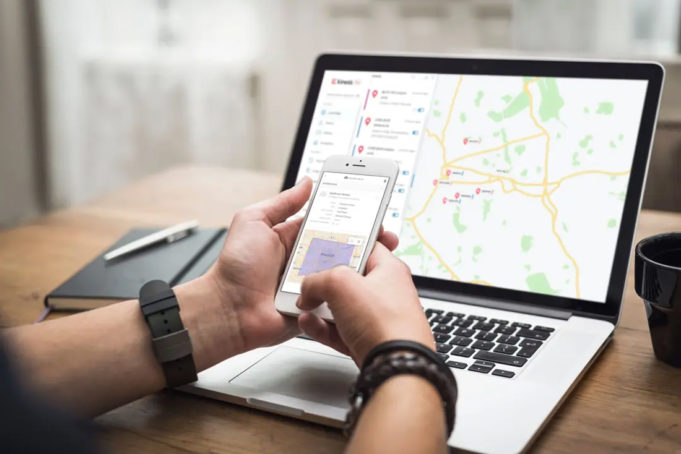The selection of the appropriate payment instruments in the fuel costs has become the focus of most business in 2025. As fuel prices increase, budgets tighten, and companies become more efficiency-oriented, they seek solutions that are convenient, cost-effective, and data-driven.
A case in point is the fuel card, and most of the questions that managers will ask are easy and straightforward: which are the best fuel cards they can use? This paper outlines the main characteristics, advantages, and factors that distinguish some fuel cards from others. Through these aspects, organizations can select a card that suits their industry, people, and financial objectives.
Increasing Fuel Cards Significance in 2025
Fuel costs have continued to be one of the biggest operational costs to a vehicle company. Efficient fleet management has never been more vital than it is now, whether in logistics, real estate, retail, or construction. Fuel cards are not just a form of payment; they serve as a means of control and monitoring, enabling companies to enhance their financial management.
By 2025, fuel cards are expected to have advanced due to the development of digital platforms. These cards cut down on fraud, ease paperwork, and give managers empowerment of information that was not accessible before, with integrations to the accounting systems, real-time tracking, and spending limits. Those companies that embrace them have a better competitive advantage in their markets.
Characteristics That Make the Best Fuel Cards
The cards of 2025 that will be leading have several similar features that render them inevitable. First, they offer full acceptance networks, so drivers will have no trouble refuelling anywhere. Extensive coverage will also reduce downtime and enhance efficiency, particularly in businesses with a national scope.
Second, nowadays, sophisticated data reporting is considered an ordinary requirement. Companies desire real-time access to cost and fleet dynamics, as well as driver conduct. The ideal cards enable managers to identify anomalies quickly, implement policies, and develop comprehensive financial projections. These characteristics assist organizations in saving their money and maintaining the flow of operations.
10 Key Benefits at a Glance
In considering what are the best fuel cards, businesses will tend to consider the following practical benefits:
- Further adoption:Can be used in various outlets in different regions.
- Discounts and savings:Stable or lower fuel rates.
- Fraud control:USER fallback purchase controls and PIN.
- Favor to drivers:Fast and cash-free transactions.
- Better reporting:Data insights to make better decisions.
- Integration alternatives: Compatible with payroll, accounting, and ERP packages.
- Budget predictability:Assists in forming the correct fuel policies.
- Environmentally friendly tracing:There are cards that track carbon emissions.
- Scalability:Supports both small businesses and big fleets.
- Reduction of administration:This does away with manual receipt-taking.
All these advantages make fuel cards an indispensable tool in every company in 2025, regardless of its size.
Before making a Choice there are Factors to be Compared
All cards are not equal. Firms should be keen on considering the aspects that are the most significant to their functionality.
Pricing Structure
There are cards that impose fees for money transfers or activities, and there are cards that offer discounts on a per-liter basis. Comparison of the pricing models will also ensure that there is no offset of the savings at the expense of costs that cannot be determined.
Customer Support
Reactive and dependable customer service is essential in case of problems. Companies require suppliers that will solve the issues in a short amount of time and limit the downtimes.
Integration with Systems
Cards that can integrate with available financial and reporting tools can save hours of manual effort, minimize errors, and streamline back-office functions.
These aspects are comparative, and therefore the companies can decide to adopt a solution that will deliver both long-term and short-term value.
Industry-Specific Considerations
Fuel cards must have different features in various industries. A generalized approach is seldom effective; thus, companies ought to concentrate on the specific needs of each sector.
As an illustration, construction companies often work in remote locations and require cards with extensive network coverage. On the other hand, real estate businesses appreciate detailed reporting to control the client-related travel expenses. The level of fraud security and real-time monitoring is required in logistics companies due to the high volume of transactions.
Businesses can ensure that their investment in fuel cards is viable and profitable by matching the features to their industry’s needs.
The Future of Fuel Cards and the Future
Technology and sustainability are the future of fuel cards in 2025. With the carbon tracking gaining popularity, most providers are currently introducing features to monitor their emissions and encourage more friendly driving. The features will be made more necessary as the businesses are under pressure to be made more environmentally friendly.
In addition, the use of telematics, mobile apps, and digital wallets will transform how businesses run their fuel expenses as well. With timely introduction of new solutions, the businesses will not only be able to save money but also be prepared to handle the future mobility requirements.
In short, companies cannot only consider price when considering what the best fuel cards are. They ought to think of a combination of savings, technology, reporting, and flexibility to make sure the selected card will help in the growth, efficiency, and sustainability in the future years.












